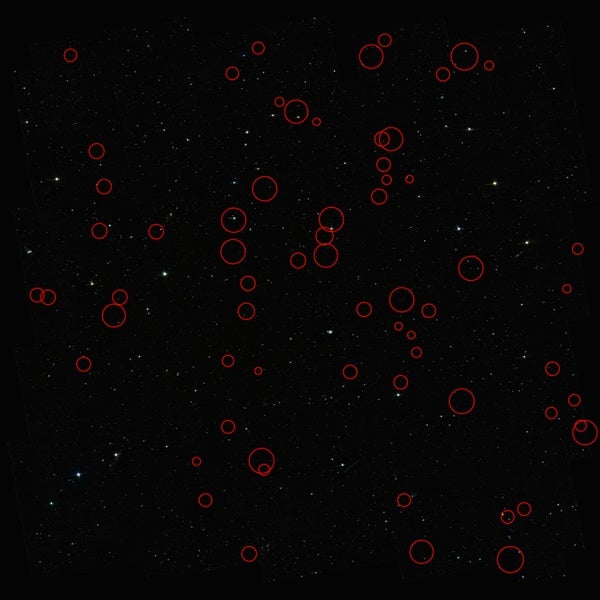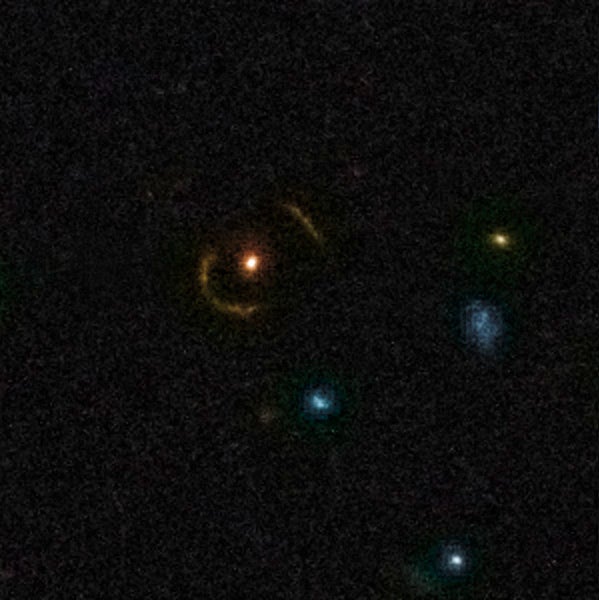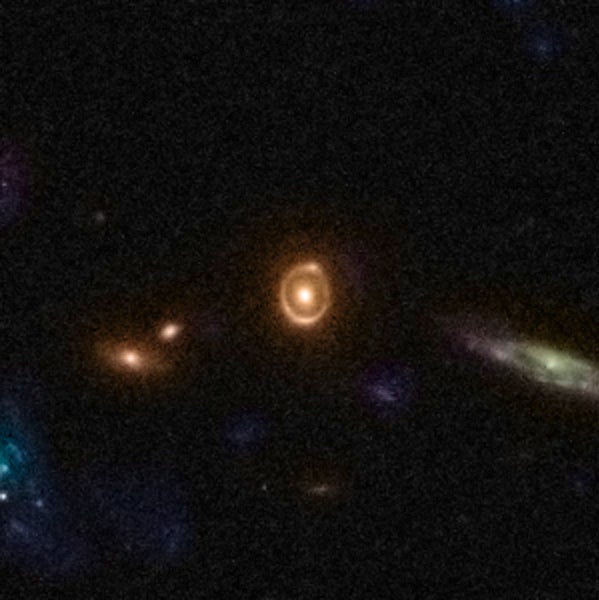Astronomers using the NASA/ESA Hubble Space Telescope have compiled a large catalog of gravitational lenses in the distant universe. The catalog contains a staggering 67 new gravitationally lensed galaxy images found around massive elliptical and lenticular-shaped galaxies. This sample demonstrates the rich diversity of strong gravitational lenses. If this sample is representative, there would be nearly half a million similar gravitational lenses in total over the whole sky.
The lenses come from a recently completed, large set of observations as part of a huge project to survey a single 1.6 square degree field of sky (nine times the area of the full Moon) with several space-based and Earth-based observatories. The COSMOS project, led by Nick Scoville at the California Institute of Technology, used observations from several observatories including the Hubble Space Telescope, as well as the Spitzer Space Telescope, the XMM-Newton spacecraft, the Chandra X-Ray Observatory, the Very Large Telescope (VLT), the Subaru Telescope and CFHT.
Gravitational lensing occurs when light traveling towards us from a distant galaxy is magnified and distorted as it encounters a massive object between the galaxy and us. These gravitational lenses often allow astronomers to peer much further back into the early universe than they would normally be able to.
The massive objects that create the lenses are usually huge clusters of massive galaxies. “We typically see the gravitational lens create a series of bright arcs or spots around a galaxy cluster. What we are observing here is a similar effect but on much smaller scale, happening only around a single but very massive galaxy,” says Kneib.
Hubble astronomers went through a unique process to identify these incredible natural lenses. First, possible galaxies were identified from a galaxy catalog, comprising more than two million galaxies. “We then had to look through each individual COSMOS image by eye and identify any potential strong gravitational lenses,” says Faure. Finally, checks were made to see if the foreground galaxy and the lensed galaxy were really different or just one galaxy with an odd shape. “With this sample of gravitational systems identified by the human eye, we now plan use the sample of lenses to train robot software to find more of these lenses across the entire Hubble image archive, and we may find even more strong lensing systems in the COSMOS field,” adds Kneib.
The new results confirm that the universe is filled with gravitational lensing systems. Extrapolating these new findings to the whole sky, predicts no less than half a million similar lenses in total. The future prospects for finding more of these systems are thus excellent.
The study of these gravitational lenses will give astronomers a first-rate opportunity to probe the dark matter distribution around galactic lenses. Once astronomers find even larger numbers of these smaller, stronger lenses they can be used to create a census of galaxy masses in the universe to test the predictions of cosmological models.












